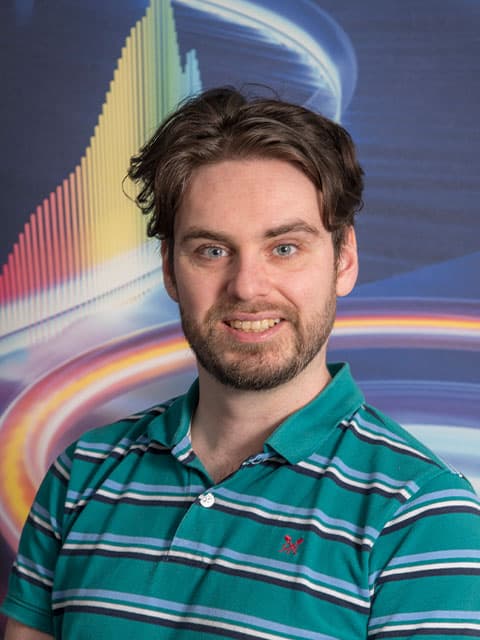Dr Luke Peters is Lecturer in Photonics at Loughborough University. Previously he held a Leverhulme Trust Early Career Fellowship at the Emergent Photonics Research Centre. He received his PhD from the University of Sussex, where he was awarded the Roger Blin-Stoyle Prize for his doctoral research in terahertz surface phenomena. Luke has held research positions at Sussex and KAUST, with a focus on nonlinear metasurfaces, computational imaging, and coherent THz source development. He was recently named to the Photonics100 list of innovative researchers shaping the future of photonics.
My main research activity focuses on the investigation of terahertz phenomena in systems with reduced dimensionality, the majority of my work has been undertaken from an experimental point of view.
Most relevant projects
Hyperspectral nonlinear ghost imaging
Utilising the emission of nonlinear THz generation crystals and a single-pixel TDS detection setup, this research line investigates the reconstruction of semi-transparent samples. We demonstrated a sub-wavelength resolution in image reconstruction as well as having complete access to the spectral domain of the target sample.
Terahertz wave control in scattering media
Building upon the research of ghost imaging and using a similar patterning approach to control THz waves as they pass through scattering media. In particular, the methodology has allowed for the deterministic estimation of the scattering matrix. The time-domain spectroscopy allowed for a sufficient description to allow for spatiotemporal control of the THz pulse.
Terahertz emission of disordered semiconductor surfaces
Silicon is widely used as a material for THz optics due to its transparency and high refractive index in the THz region. However, it cannot be exploited as a THz generator as it does not host a generation mechanism of relevance. I have experimentally investigated terahertz emissions from Silicon disordered dielectric structures on semiconductor substrates, in partnership with the PRIMALIGHT group led by Prof. A. Fratalocchi at the King Abdullah University of Science and Technology of Saudi Arabia.
Properties of surface THz-Generating mechanisms
The efficiency of optical-to-THz conversion processes at nonlinear surfaces is limited by a number of field-matter interaction mechanisms. My experimental findings on this subject have provided novel insight into the physical mechanisms that limit THz generation at high fluences, paving the way to a new generation of quasi-2-dimensional emitters.
- Integrated Photonics subcommittee member for OSA Advanced Photonics Congress 2021, 2022, 2023, 2024, 2025
- Reviewer for Nature, Nature Photonics, Nature Communications, Advanced Optical Materials, Advanced Science, Advanced Photonics, Scientific Reports, Optics Express, Optics Materials Express, OSA Continuum, Optical Fiber Technology, Photonics Research, Journal of the Optical Society of America B, Applied Science
- European Representative and Events officer for OPTICA Nonlinear Optics technical group
- Chair of OPTICA Terahertz wave and millimetre science technical group
- Guest topic editor for Frontiers in Photonics, topic title: Surfaces for Enhanced Terahertz Radiation Generation and Manipulation
- EPSRC sift panel member and a reviewer for the call “Research in terahertz technologies and systems 2024”
